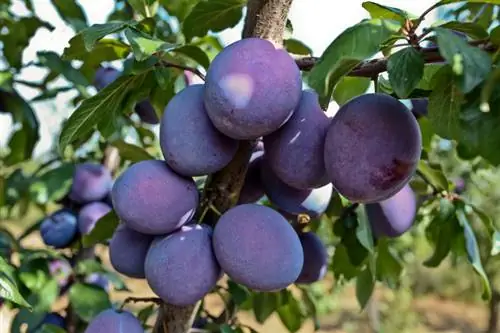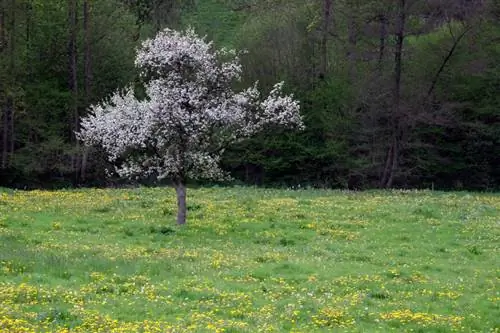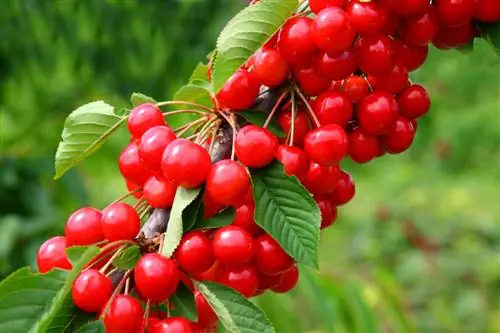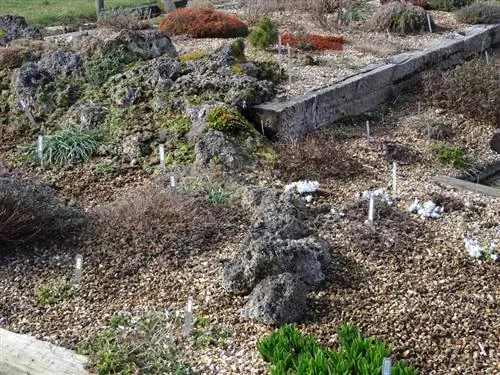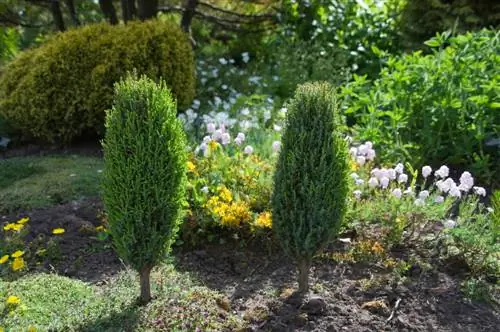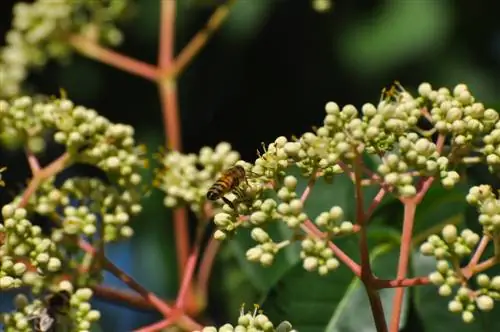- Author admin [email protected].
- Public 2023-12-16 16:46.
- Last modified 2025-01-23 11:20.
The Prunus domestica has been highly regarded in Europe for centuries. Its fruits impress with their juicy, fruity consistency. By choosing the right location, you can plant an easy-care, long-lasting fruit tree. We reveal the most important tricks.
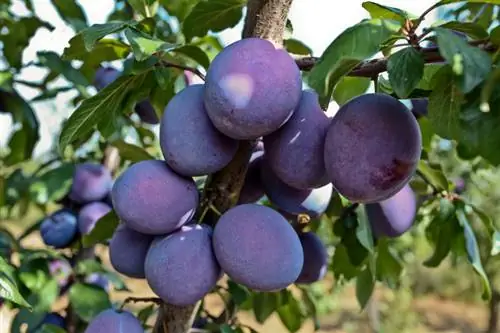
How do I plant a plum tree correctly?
To properly plant a plum tree, choose a sunny, wind-protected location, plant it in early spring or late fall when the ground is frost-free, and be sure to include the entire root ball. Regular watering, fertilizing and pruning promote the development and he alth of the tree.
Tips for watering
Small trees need plenty of water. Their roots store little liquid. For this reason, they should never dry out. The use of rainwater is recommended. During summer dry periods, regular watering supports the development of older plum trees.
Transplanting: Yes, but right
Young plum trees change location without difficulty. Please note that the entire root ball is carried along. Damaged roots must also be removed. Choose a sunny and wind-protected location. A tree can be planted in early spring, as soon as the ground is frost-free. Alternatively, late autumn is suitable.
Tip:
The root ball is as big as the treetop.
Frosty alternative:
If you missed the planting time, you can make up for it in the winter. For transplanting during frosty temperatures you will need the following things:
- Garden soil: store in the cellar from autumn.
- Dig up root balls in late autumn.
- Dig a trench around the root ball and fill it generously with leaves or hay.
- Change location: as soon as the ground is frozen
Appropriate pruning at the right time
The easy-care plum trees require regular trimming. Light pruning every one to two years supports the development of fruit shoots. Note that the shoots produce fruit for a maximum of four to five years. Afterwards they only form leaves or dry up.
The following measures are important:
- Thinning out the inside of the treetop
- remove dried branches
- natural crown shape: round to oval
- lateral leading shoots: remove about a third of the length
Rule of thumb:
Don't blend radically, but piece by piece at regular intervals. Start with constant pruning from the third year of planting.
How susceptible are plums?
Prunus domestica is generally considered to be resilient. It is worth checking young shoots, leaves and plums at regular intervals for the following characteristics:
- fungal toppings
- Nets
- feeding marks
- Discoloration (-for example: red, yellow, blue)
- Deformations, primarily in fruits
- sick spots (holes in the leaves)
The appearance of these details may be a sign of disease or pest infestation. Proper care and a good location prevent this, but are not considered 100% protection.
When and how often should you fertilize?
Once a year, natural fertilizer supports development. Compost, manure or special liquid fertilizers for fruit trees are suitable.
Which measures support wintering?
The easy-care plum tree survives European winters well. In very cool locations, the use of garden fleece can protect against frost damage.
Tips & Tricks
Self-fruiting plum varieties are preferable. In this way, planting one tree is enough. Otherwise at least two copies are necessary.

